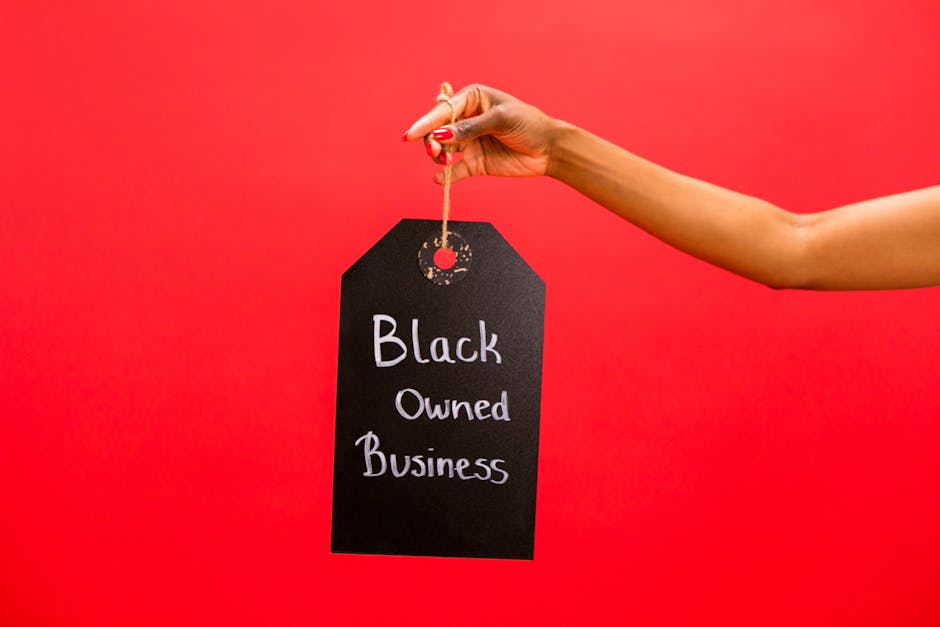The year 2025 is here, and folks are still puzzling over some pretty basic things in the digital world, like how you should actually write an email subject line for marketing. It’s funny, because you’d think by now, with all the gadgets and the algorithms, we’d have figured out something as seemingly small as capitalization. But nope, it’s still a real head-scratcher for a lot of people trying to get their messages opened.
You see, getting someone to click on your email is a big deal, right? It’s not just about what’s inside, though that’s certainly what keeps them reading. It’s that first little bit of text that pops up in their inbox, just a few words, that has to do the heavy lifting. And whether those words are all big and shouting, or small and quiet, it makes a kind of difference, one would think, in how someone perceives your message.
People are constantly thinking about the best ways to get attention, for sure, particularly in crowded inboxes. There are so many messages flying around these days, you practically need a strategy just to sort through your own stuff. So, it makes a bit of sense that marketers are spending time on the little details, hoping to gain some kind of edge.
It’s about communication, really, and how we put our words out there. Whether you are running a big company or just trying to get some news out, the way your subject line looks can say quite a lot about your brand, or at least that’s what some believe. It’s certainly something to ponder, you know, when you’re crafting those messages.
So, should marketing emails subject lines be capitalized? Is it like a secret code for getting more opens, or is it something that just makes people roll their eyes and hit delete really fast? We’re going to talk a bit about all that, considering what some people observe and what common sense kind of suggests in this busy digital time.
Capitalizing Email Subject Lines: The Big Question in 2025
This whole capitalization thing for email subject lines is kind of a big deal for marketing teams, or it is considered to be a big deal by many. Everyone wants to stand out, and figuring out the right look for your messages can feel like a guessing game sometimes. It’s not just about being grammatically correct, though that’s usually a good idea, naturally.
It’s more about the feeling you give off and what you want your message to convey. People often wonder if making every word start with a capital letter, which we call Title Case, gives a more professional vibe. Or perhaps using just the first letter capitalized, Sentence case, feels more friendly and less pushy, you might say.
Then there’s the whole “all caps” debate. Some folks really think it helps their email get seen because it just jumps out. But then, other people sort of cringe when they see all caps, seeing it as a bit like someone shouting at them. It’s a delicate balance, and there’s no one-size-fits-all answer, which can be annoying.
What we are talking about here is trying to make a connection, and that connection starts with that subject line. It’s truly a small bit of text, but it holds a lot of power over whether someone bothers to find out what’s inside the message itself. So, picking your capitalization style is, well, it’s pretty important, or so it seems.
What People Think Happens with All Caps or Title Case, Honestly
Many people, when they think about capitalization in email subject lines, often link it to how noticeable the email will be. There’s a common belief that more caps means more attention, which is a pretty understandable thought process in a noisy inbox environment. It makes the text look different, you know, from all the regular lowercase stuff.
For example, using Title Case for your subject lines, where each main word starts with a capital letter, is normally seen as a professional choice. It gives off a sense of being well-put-together and perhaps a bit more formal, which some brands try for. It feels ordered and proper, like a newspaper headline would be.
Then, there are the subject lines that are completely in ALL CAPS. These are the ones that really divide opinions, you could say. Some marketers go for this style because they think it’s the only way to genuinely grab someone’s gaze in a big hurry. It’s like a siren call, screaming “Look at me now!” right there in the inbox.
But then, others will tell you flat out that ALL CAPS is a big no-no. It can be interpreted as rude or aggressive, and people might just scroll right past it without a second thought. Nobody likes feeling yelled at, especially not first thing in the morning when they’re just checking their email. It’s a risk, that’s for sure.
It is certainly true that the way your words appear matters quite a bit. It’s not just the words themselves, but their presentation, that creates a first impression. What someone feels when they see your subject line can decide if your message gets opened or if it just gets sent straight to the trash, a quick decision being made.
Different Styles of Capitalization and Why They Matter (Or Don’t)
Okay, so let’s get down to the actual different ways you can capitalize your subject lines. We’ve got a few main types that people typically use, and each one kind of has its own vibe and potential reaction from the person reading it. Understanding these can help you figure out what might work best for your own needs.
First, there’s Sentence case. This is probably the most natural-looking one. Only the first word of the subject line, and any proper nouns, begin with a capital letter. It looks like a normal sentence you’d read anywhere, making it very approachable. It’s calm, simple, and generally doesn’t cause any strong reactions, good or bad, one might observe.
Next up, we have Title Case. This is where every significant word in the subject line gets a capital letter at the beginning. Things like “and,” “the,” “of” usually stay lowercase, but all the important words are capitalized. This style is often used for book titles or headlines, so it can feel a bit more formal or important, a definite distinction.
Then comes the full-on ALL CAPS subject line. Every single letter in every single word is capitalized here. This is the style that’s usually intended to be really eye-catching, to pop out against all the other messages. It’s meant to make people stop scrolling and perhaps pay more attention, at least that is the thinking behind it.
What people think about these styles is definitely varied. Sentence case is generally seen as safe and friendly. Title Case often feels polished and quite professional. All caps, though, is the real wildcard. It can grab attention, yes, but it can also be a total turn-off for a lot of people, coming across as a bit much, really.
It’s often a balancing act, trying to make your email stand out without annoying the heck out of your potential reader. And sometimes, what works for one group of people might not work for another group at all, which is something you have to remember. It’s not always so simple, you know.
When Capital Letters Go Too Far – A Look at the Downside
While the idea of using capital letters to grab attention seems like a pretty straightforward approach, it’s certainly something that can backfire, too. There’s a line, you see, between getting noticed and just being plain annoying. And crossing that line in an email subject line can have some pretty negative effects on your marketing work.
One of the biggest issues with using too many caps, especially all caps, is that it can make your email seem like spam. Spam filters, those digital gatekeepers, are often trained to flag messages that use excessive capitalization as potentially unwanted. This means your email might not even make it to the inbox at all, which is a real problem.
Even if it does get past the filters, seeing an all-caps subject line can make a person think “spam” automatically. They might just delete it without even opening it, which is the exact opposite of what you’re trying to achieve. It’s a very quick judgment people often make, based on that initial visual cue, you could say.
Also, as we briefly mentioned, all caps can feel like shouting. It’s just generally understood in online communication that typing in all capital letters means you’re yelling at someone. Nobody really likes being yelled at, especially when it’s an unsolicited marketing message popping into their personal space, which is typically a gentle thing.
It can also make your brand look a bit less professional, or a little desperate perhaps. If your subject line is screaming for attention, what does that say about the content inside? People might think you’re overcompensating for something or that your message isn’t strong enough on its own, without all the visual noise.
So, while the temptation to use those big letters to stand out is definitely there, it’s really important to think about the potential downsides. You don’t want to turn people off before they even get a chance to see what you have to say. It’s about building trust, not making enemies with your email format.
Finding Your Own Way: Testing and Knowing Who You’re Talking To
Figuring out the absolute best way to capitalize your marketing email subject lines isn’t like finding a simple answer in a textbook; it’s more like a puzzle unique to your situation. What works for one company might not make any sense for another, and that’s just how these things go, usually. It truly depends on a couple of really big factors.
One of the most important things is knowing your audience really well. Who are the people you’re trying to reach? Are they young and used to more casual communication, or are they older and perhaps prefer things a bit more formal? The way they generally speak and write can give you some clues, a good indication of their preferences.
For example, if your brand is all about being quirky and fun, a slightly unconventional subject line might fit right in. But if you’re, say, in the financial sector, where trust and seriousness are key, then a more conservative Sentence case or Title Case approach would probably be much better received. It’s about fitting the context, really.
Then there’s the whole business of trying things out. This is where what some people call “A/B testing” comes in, or really just trying different things and seeing what happens. You send out the same email to two small groups, but with different subject line capitalization styles. Then, you see which one gets more opens, you know.
It’s a process of just seeing what performs better with your specific group of people over time. Sometimes, you might find that a touch of Title Case works wonders, and other times, keeping it simple with Sentence case is the winner. The real thing is that you have to be ready to adjust your approach based on what you learn.
Don’t be afraid to mix it up a bit, but always keep an eye on what your audience actually responds to. That’s the best advice anyone can give, honestly. It’s similar to how businesses might try out different approaches for their digital presence, like investing in Mobile app development Delaware; they test and refine to make sure their strategy fits their user base well.
Ultimately, there’s no universal rule that says, “Always capitalize this way” or “Never capitalize that way.” It really boils down to thinking about your brand, understanding the people you’re trying to talk to, and being willing to experiment a little to find out what genuinely connects with them. It’s about making a positive impression every time.
FAQs About Marketing Email Subject Line CapitalizationQ1: Is it really bad to use all caps in email subject lines for marketing?
A1: Generally, using all caps can be quite risky. Many people find it to be like shouting, and it can sometimes make your email look like spam, which means it might not even get opened. It’s usually better to be careful with it.
Q2: What is the most common or safest capitalization style for marketing emails?
A2: Sentence case, where only the first word is capitalized (like a normal sentence), is often considered the safest and most approachable style. It looks natural and generally doesn’t cause any negative reactions from readers.
Q3: Does capitalizing every word (Title Case) make my email look more professional?
A3: Yes, Title Case can certainly give your email a more polished and professional appearance. It’s similar to how headlines are often formatted, suggesting that the content is well-structured and important, you might say.
Q4: Will using certain capitalization affect whether my email goes to spam?
A4: Yes, it definitely can. Email spam filters sometimes flag messages with excessive capitalization, especially all caps, as potentially unwanted or suspicious. This could make your marketing emails land in the spam folder instead of the inbox.
Q5: How can I figure out the best capitalization style for my specific audience?
A5: The best way is to test different styles. Try sending out emails with Sentence case, Title Case, and maybe even a limited use of all caps to different small groups of your audience. Then, look at which style gets the most opens and engagement.



